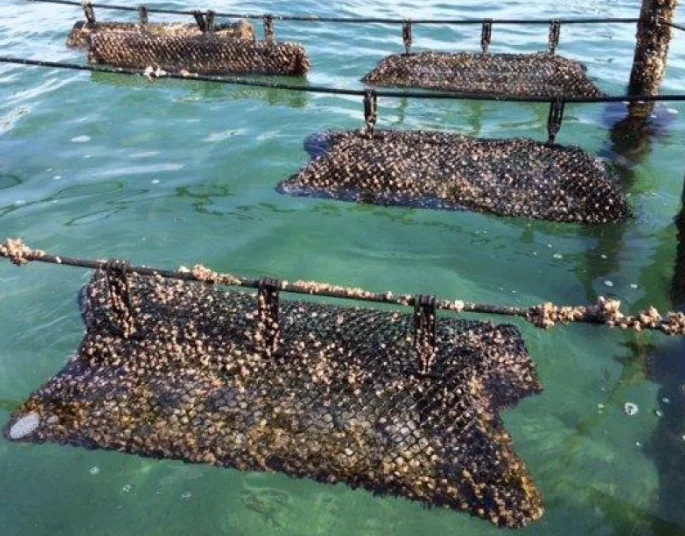

Oyster larvae are attracted naturally to these structures, and reef builders can also use hoses to spray oyster seeds or spat on them to get a colony going. Reef builders, who include government agencies, commercial growers, academics, and conservation groups, tend to build these reefs well below the low tide line (that is, in subtidal areas) so they are less likely to be buried by sediment or degraded by waves. These structures, which may incorporate recycled shell from restaurants and shucking houses or leftover concrete from construction or demolished dams, also provide homes for other marine life, such as crabs and fish. Sometimes people use rocks or precast concrete structures to build large, tall, and durable condolike reefs for oysters. Oysters are OK with manufactured housing.Researchers inspect oyster, clam, and seagrass restoration projects near the Southampton Marine Sciences Center operated by Stony Brook University, on Shinnecock Bay in New York. This technique has been widely used along the Atlantic and Gulf coasts to help the species and reefs recover, primarily to meet consumer demand for oysters. Restoration efforts may also include adding spat to reefs when building them. In response, in some areas, governments, researchers, conservation groups, and others have started making reefs using cultch-material such as oyster shells or crushed limestone and concrete. coasts, about 85 percent of reefs have been lost, and in some places they have become locally extinct. In many places, larvae have nowhere to attach. Once attached to any surface, the larvae are called spat. Many are eaten by small predators or otherwise die others settle on a surface-ideally an existing oyster reef-where they’ll spend the rest of their lives. To reproduce, oysters produce larvae, which then drift for two to three weeks. Here are eight things to know about oysters and how they grow: Reefs stabilize shorelines and provide habitat for many marine animals, including commercially and recreationally valuable fish species. Oysters filter water as they eat primarily algae. Healthy reefs not only deliver more oysters but also convey environmental benefits. So oyster growers, scientists, conservationists, and others are finding ways to build new reefs and help oysters reproduce. Oyster reefs are declining worldwide and face threats ranging from polluted and warming water to dredging, erosion, and diseases. 13, 2019 to correct a photo caption.Ĭonsuming an oyster on the half shell is about as quick and easy as eating gets-a stark contrast to what it often takes to get that mollusk to the dining table.


 0 kommentar(er)
0 kommentar(er)
